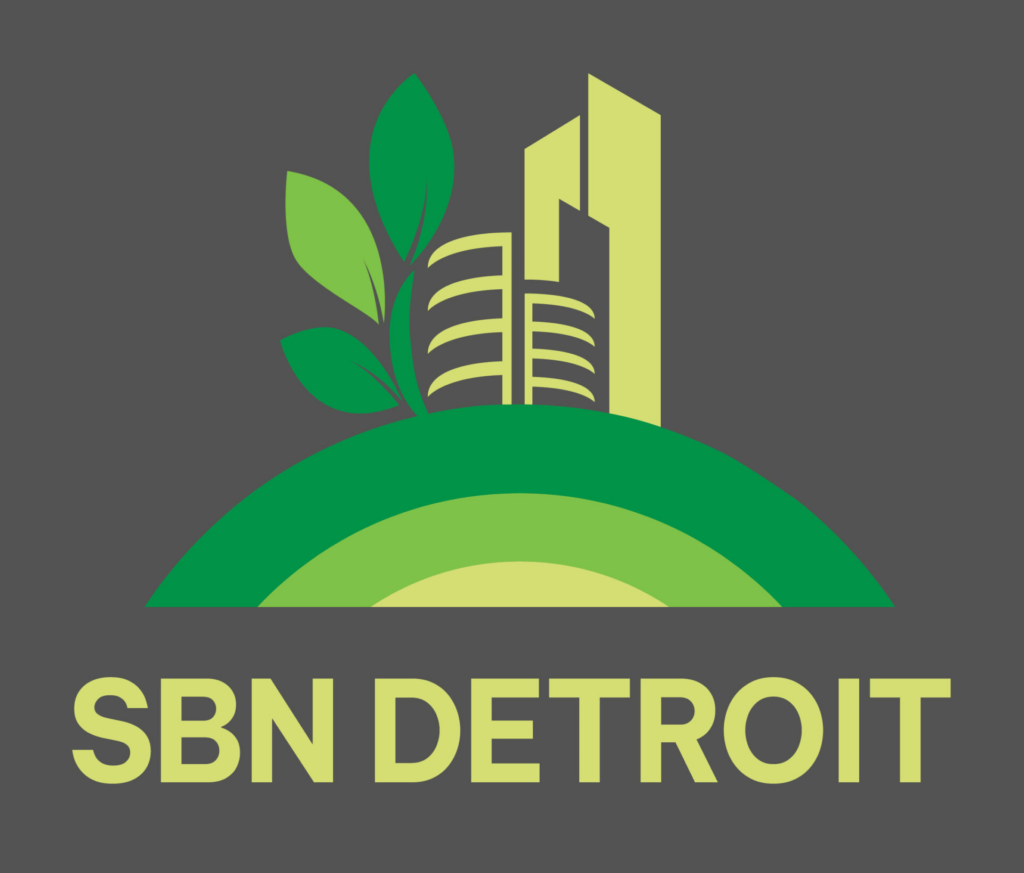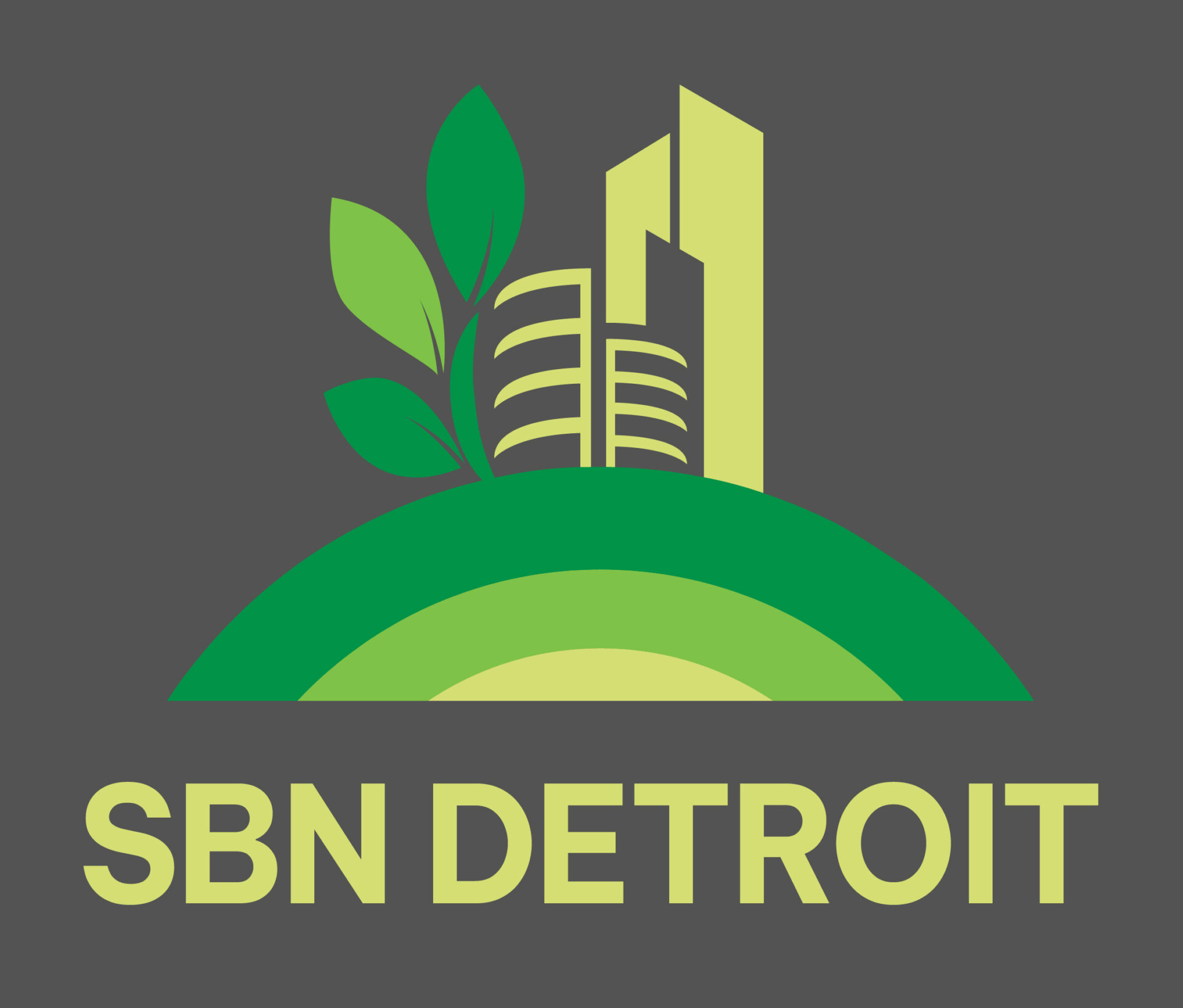Sustainability Progress in Oakland County
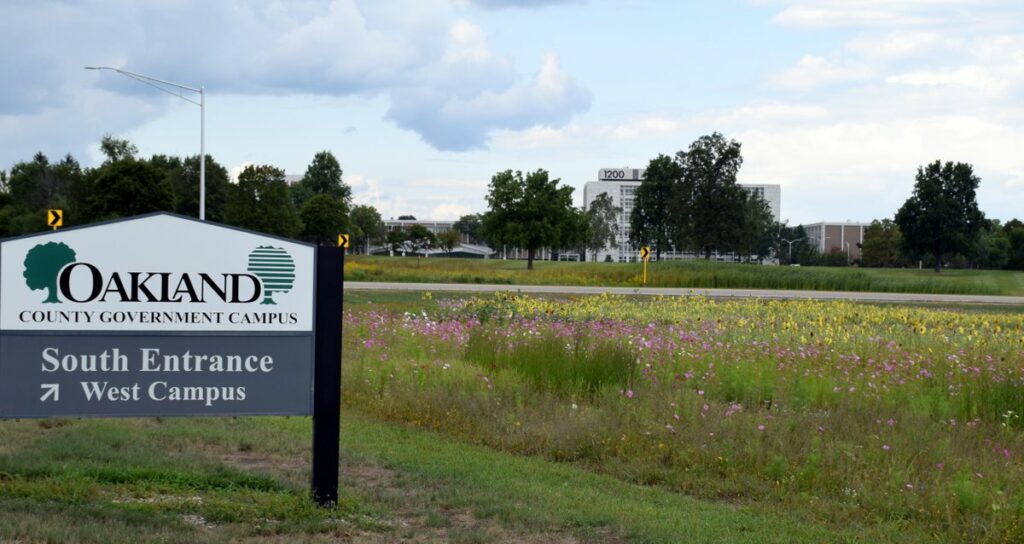
Erin Quetell became Oakland County’s first chief environmental sustainability officer in 2021 after working for four years as the City of Ferndale’s environmental sustainability planner. Quetell received a bachelor’s degree in Biology from Grand Valley State University and a master’s degree in Public Administration in Environmental Science and Policy from Columbia University in New York. Before her time in Ferndale and Oakland County, Quetell worked in the private and nonprofit sectors with a focus on environmental issues through service in the Huron Pines AmeriCorps program, at the Greening of Detroit, and through consulting at OHM Advisors. She is a graduate of the 2020 Michigan Women’s Municipal Leadership program and Leadership Oakland Class XXIX. She served as previous co-chair for the Great Lakes Climate Adaptation Network, and is a current board member for the nonprofits Make Food Not Waste and the Clinton River Watershed Council. SBN Detroit spoke with Quetell about her work, sustainability priorities, and how businesses in the county can be involved. Q: In 2021, you stepped into the role of Oakland County’s first sustainability officer. Now, two years later, what impact do you think you’ve been able to make? A: Well, it’s not just me. I do have a small team, and what I’m most proud of is we conducted a competitive bidding process and negotiated a renewable energy purchase so that we now have a third-party purchase agreement. Seventy percent of all electrical needs for Oakland County facilities will be from solar, which helps us toward our climate goals and helps demonstrate the priority of our decarbonization goals. Additionally, we have finalized an environmental sustainability plan for the county campus and facilities which includes a review of all the county’s buildings to best determine energy and water efficiency improvements, accessibility, carbon reduction, and other sustainability-related upgrades. Also notable, I think, is the work we are doing on the tri-county electric vehicle planning project. Residents and businesses are definitely interested in electrification, and we want to be able to offer people in our 62 cities, villages, and townships the resources they need to learn more. To that end, we developed an EV toolkit that’s a great resource for anyone interested in EV deployment. Q: What are your top priorities for the county when it comes to sustainability? A: We’ve been working to have a very clear understanding of what we need to do as an entire county in response to the climate crisis. Being fairly new in this role, I’ve been spending time meeting with groups and organizations to understand all local activity and in turn working to align with the MI Healthy Climate Plan with these greater efforts to maximize impact. As I mentioned, electrification is a priority along with the alternative fuel corridors throughout Oakland County. With funding in the pipeline, we are identifying ways and partners to expand these alternative fuel corridors to include right of ways such as Grand River and Woodward and also facilitate greater community engagement around future vehicle electrification in general. Another priority is continuing the county’s energy efficiency programming – such as weatherization programs – and leveraging opportunities to reduce the energy burden for residents and businesses. We have underrepresented communities in Oakland County that have been left out, and we need to provide help and resources to everyone going forward. Q: I read that Oakland County became part of a class of 16 communities across the country that will be working to get the county LEED-certified by late 2023. What impact will this have on the county, stakeholders, residents, and businesses? A: You can’t manage what you don’t measure and LEED certification for counties is a really good basis for sustainability metrics. LEED for cities sets a framework to collect data. The outcome of these metrics can then be utilized as a resource for businesses in the county in their acquisition and retention of talent – showing that it’s a good place to live and work. Q: How do you work with businesses in the county to become more sustainable or equitable? A: One piece of the puzzle is our procurement practices. We are being very intentional in diversifying contractors and suppliers for county opportunities. Back to the LEED Certification, we can share out stronger metrics and qualifications when we bid out projects. Government contracts can be overwhelming for smaller companies, and this information will make things clearer so we can ultimately work with a broader range of companies in the county. Outwardly facing, we have a large education push, specifically through our Oakland80 program, community navigators, and other workforce development programs. As electrification becomes more prevalent, people need additional and new training to support that transition. We are working to make sure our future workforce is nimble and has the skills in demand. So far, much of my work has been networking and discussion. I have been in many conversations with various businesses related to mobility solutions such as electric vehicle charging infrastructure, batteries, and other sustainability practices. I work closely with our economic development team to start integrating more sustainability opportunities and show how the county is supportive and pushing for greater sustainability. There is still much to be done. Q: What impact do you think Southeast Michigan businesses have on sustainability within the county and as it pertains to your role? A: I think businesses have a lot more potential to move the needle than many people realize. One of the things we are talking about is how can we develop more sustainability networks and resources and how can we work collaboratively toward our climate goals. Businesses are becoming vested, and we are starting to see more collaboration, understanding, and pressure to address greater ESG efforts. There is so much opportunity here – we have not scratched the surface, and I look forward to the potential outcomes. Q: What advice would you give businesses in Oakland County if they are looking to work together toward sustainable practices? A: I think starting with evaluating where you are today is the best way
How the UN Summits on Climate Change and Biodiversity Affect Our World

Global leaders met in Egypt in November 2022 to attend the COP27 Summit on Climate Change and again in December in Montreal for the COP15 Biodiversity Conference, reaching significant agreements to drive important changes around the globe. How are the outcomes of those meetings affecting the world, the business community, and our lives in Michigan? SBN Detroit hosted Andrew Deutz, director of global policy, institutions, and conservation finance for The Nature Conservancy, in a virtual event on May 4 to share his insights. Deutz – an expert in international environmental law, policy, and diplomacy – directs the TNC’s global policy work spanning the areas of biodiversity, sustainable development, and conservation finance and oversees relationships with international organizations, multilateral development banks, and foreign aid agencies. During this event, he addressed why these global meetings are relevant to our everyday world; what impacts we should anticipate in our decision-making as business leaders; and how The Nature Conservancy is participating in these global discussions to assure a sustainable world for both people and nature. Moderator Tammi Dukes, Adient’s vice president of global sustainability, facilitated a Q&A session that followed. Deutz set the stage by explaining that there is a deep Interrelatedness between climate change, biodiversity, and the global economy, and, essentially, we cannot fix one without the others. This global theme is driving the discussions and outcomes of these meetings that will in turn help inform the way businesses make and target goals, secure supply chain partners, develop sustainability practices, allocate budgets, and more. In terms of biodiversity and climate change, there are tipping points in ecological systems as the climate warms. For example, in Southeast Asia, if we increase to two degrees Celsius we will start to lose coral reefs. If the Amazon River warms three to four degrees, the rainforest could shift to grassland. In the Arctic, we could lose permanent sea ice. All of these have repercussions on the integrity of the ecosystem and economy, and they also facilitate additional warming that exacerbates the trends. The Montreal Biodiversity Conference informed us that more than half of the global economy is dependent on nature, and if we continue to degrade nature it will undermine the economic world as a whole. The world currently spends $140 billion on preservation, yet also spends four to five times that amount undermining it through harmful subsidies. To become nature-positive, it is estimated that $700 billion-$900 billion is needed annually. Deutz said to reverse the trends, we need to make changes in the global economy. So, the question becomes, how do we address the climate crisis and nature preservation with the growing debt crisis? How do countries allocate funds toward these goals? Deutz gave examples of countries forgiving debts in exchange for allocating funds toward forest preservation, the government buying back financial debt and replacing it with funds to spend toward climate resilience, and other alternative options that are coming out of the leadership discussions. Deutz also noted that businesses are becoming continually more aligned with the UN’s 2030 Sustainable Development Agenda, so progress is being made. In addition to global environmental goals such as the 2030 Agenda and the 2050 Environmental Goals, there also are tangible frameworks for companies to understand and assess climate risk so that they can measure and reduce impact; practices on how to drive decarbonization; and incentives for companies to invest in greener companies and more. Following is the Q&A that took place after Deutz’s presentation. Dukes: Do you think manufacturers in the U.S. are operating at a rate that will get us to the goal of carbon neutrality by 2030? Deutz: No. But nobody is. We are making progress, but we have to accelerate that progress. There are two drivers, I think. First, investors need to back companies that are aligned with the 2030 Agenda. Second, we need to start seeing this happen through corporate supply chains as well. For example, in the UK and Europe, there are now trade provisions that restrict the import of commodities that drive deforestation. Companies need to be responsible for their supply chains and ensure that all parts of the chain are driving toward net zero goals. Dukes: What is the buy-in of countries so far and what traction has been made? Deutz: It’s a mixed bag, but we’re seeing a lot of progress. Most of the major economic players at the government level have set targets toward 2050 or 2060. Those targets still aren’t good enough, but most of the world is on a pathway. On the nature side, it’s a little more complicated. There is a coalition of 130 countries that came together before Montreal and agreed to the 30×30 initiative, which refers to ensuring good conservation practices around 30% of terrestrial and marine habitats by 2030. There seems to be an easier consensus around that than how we sustainably manage the other 70%. Ultimately, sustainability is about 100% of the landscape being sustainable. We have a lot further to go on figuring out how to manage the 70%. Dukes: What are the key indicators in nature that we need to pay attention to? Deutz: There are two key indicators. The first is vegetation cover. As the world loses vegetation coverage, it impacts water balance, and science is showing less rainfall is falling on land. As I said earlier, there is a risk of the Amazon transitioning from rainforest to grassland. Less vegetation results in less water in the atmosphere and we begin losing agricultural potential, which could turn into a global food crisis. The second is species extinction. We are losing species at a rate of ten to 100 times faster than the rate of natural extinction, and these animals help maintain the ecosystem. Dukes: What role can small businesses play in achieving change? Deutz: The answer is the same as large businesses. Assess your supply chains and put the same practices into place. But yes, large businesses are being called on to meet certain criteria first, because they can,
Small Business Role in Sustainability is Largely Untapped

WAFA DINARO, EXECUTIVE DIRECTOR, OF THE NEW ECONOMY INITIATIVE, AND A LEADERSHIP COMMITTEE MEMBER FOR SUSTAINABLE BUSINESS NETWORK DETROIT During an internship with a recycler in New York in 2020, entrepreneur and environmental scientist Madeline Miller watched as the waste materials from textile companies were being processed in the facility, and something entrepreneurial clicked. In the “waste,” she saw home-building insulation that could be reused back home in Michigan while increasing energy efficiency in Detroit homes. From there, NexTiles was born, a Detroit-based textile recycling company that produces EcoBlow – a nontoxic, eco-friendly building insulation made entirely of recycled pre-consumer fabric from manufacturers, particularly automotive interior suppliers, and fashion designers. While her experience reflects the role small businesses can play directly in terms of creating eco-conscious products, every small business, no matter their product or service, can implement eco-friendly business practices. Unfortunately, many of the same challenges that prevent small businesses from thriving in general – limited access to capital and lending; a lack of technical assistance in finances, marketing, and business planning; and the inability to tap into a business support network for grants and resources – will prevent them from reaching their full potential in sustainability. Yet, nearly all the factors that help small businesses drive economic resilience position them to be a transformative force in sustainability. SMALL BUSINESS DRIVES SUSTAINABLE ECONOMIC RESILIENCE First, there are the sheer numbers. There are 33.2 million small businesses in the U.S. accounting for 99.9% of all businesses. They make up our largest employer group and accounted for almost two-thirds – or 17.3 million – of all jobs created from 1995 to 2021, according to the Small Business Administration. And they continue to grow, in 2022, there were more than 5.1 million new business applications filed. Second, small businesses are nimble and can move quickly to drive innovation. They are fueled by their founders’ ideas and life experiences and are often created to provide solutions to real-world problems impacting friends, families, or communities. Third, small businesses are invested in the social fabric of their communities and exist all around us, giving them nearly universal reach. They have a vested interest in their neighborhoods thriving that stretches well beyond business and adds further incentive for them to succeed. At the New Economy Initiative, we’ve spent the past two decades building a support ecosystem that helps entrepreneurs, startups, and small businesses build a more resilient economy within their own communities and Southeast Michigan. In the case of NexTiles, we provide funding to the Centrepolis Accelerator at Lawrence Tech University, which has played an integral role in NexTiles’ product development and growth. It is why we support similar nonprofit and locally grounded organizations that provide technical assistance, lending, and connections to small businesses throughout Southeast Michigan. Sustainability is the next logical step in expanding our mission. That is why the New Economy Initiative is pursuing a sustainability program to integrate with our traditional business support activities. NEI SUSTAINABILITY PROGRAM GOALS That program can accomplish a few major goals that will help small business play its role in sustainability by mirroring much of what we already do. It would include raising awareness about the bottom-line business benefits of sustainability that can be achieved through energy efficiency. It can help businesses identify how to integrate sustainable practices into their business plans that reduce waste while increasing efficiency and profits. It can help them access resources and grants available to increase sustainability. Chief sustainability officer is one more a hat small business owners are asked to wear – we need to provide a small business ecosystem that empowers them to fulfill it. Until we do, the collective power of our largest employer group to create a world that lasts for future generations is largely going untapped. Source for data: https://www.uschamber.com/small-business/state-of-small-business-now Be sure to subscribe to our newsletter for regular updates on sustainable business practices in and around Detroit.
An Interview with Detroit’s New Director of Sustainability
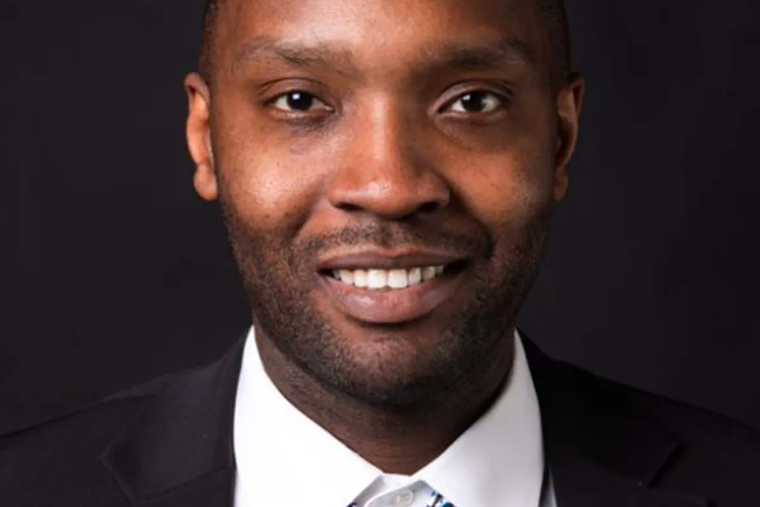
Jack Akinlosotu, Detroit’s new director of sustainability, sees sustainability opportunities in Detroit’s large geography, mobility industry focus, and other characteristics as he begins to immerse himself in the community. Akinlosuto came to Detroit from Washington, D.C., where held posts at the Department of Energy and Environment (DOEE), the Clean Energy Institute, and in private industry. He also has held positions in New York City, San Francisco, and Seattle. Immediately before coming to Detroit, he served as the senior product manager at Oracle Energy & Water, where he led partnership outreach and software development of the company’s product that helps utilities find, reach, and enroll limited-income customers in financial assistance and energy efficiency programs to lower their utility bills. Previously, he worked as the energy program specialist at DOEE to coordinate multiple renewable energy projects, including community accessibility to solar power, electric vehicles, and green financing. SBN Detroit spoke with Akinlosotu about his vision, how he’ll align strategies with the city’s Sustainability Action Agenda, and his top priorities in his new position. Q: What role does environmental sustainability have for a city the size, scale, economy, and density such as Detroit and how will you approach it? A: When I first came and visited Detroit I was surprised at the geographic scale. There is a lot of space and land. For a city this size to have this much unused land is unusual, and that provides opportunities here in terms of sustainability. There is ample space to scale, deploy and set up solar power and things like that. Also, Detroit is the Motor City and is in a good position to be the frontrunner in the EV revolution. If we deploy EVs in smart ways we will continue Detroit’s history of being the leader in mobility and that’s a great opportunity for economic sustainability as well. Q: What challenges do you foresee ahead of you, for your office, as you move ahead with a sustainable mission for the city? A: The biggest challenge is making sure we are all hitting our climate goals. When it comes to scaling climate change, that’s a challenge every city faces. There is a lot of work to do and coordination and collaboration need to happen. We need to make sure all parties are in alignment for success, and some challenges come with this. We also need to ensure that the people who have historically been left behind are included as part of the process. Q: Conversely, what opportunities do you foresee? You are quoted as saying “There is a great deal of opportunity in Detroit to be more creative in developing lasting sustainability. The sustainability programs we need will be a transformative leap for Detroit.” What does this mean for the businesses and people of Detroit? A: With all the work at hand there are significant opportunities to bring along a new workforce. For example, we need to work on making these older buildings and also residences energy efficient and we need a workforce to do that. We need to deploy and scale the use of solar energy and we need people to do that. There are a lot of opportunities to align climate goals with new jobs. We also need to focus on putting programs in place – such as deploying renewable energy – that help people with limited income. I see this as an opportunity to build a more sustainable economy and more sustainable communities. Q: How do you foresee working with businesses in the city to help them to become more sustainable? Or equitable? A: It’s important that we all work together to help businesses in our region hit their climate goals. In addition to sustainability, there are a lot of financial upsides to making buildings more efficient so there are several “wins” here. Q: What does the Sustainability Action Agenda look like now as you work to create a more sustainable Detroit where all Detroiters thrive and prosper in an equitable, green city and have access to affordable, quality homes? A: There is work being done on many fronts to hit our goals and inform an updated Detroit climate strategy, including the following four key priorities: -Electrification of the city’s vehicle fleet -Transitioning municipal buildings to energy efficiency and -Deploying solar and other measures of clean energy to help with decarbonization -Focus on vulnerable communities and the city’s overall resilience We are working to help vulnerable residents across Detroit by setting up resilience hubs for when there are outages and protecting homes with basement backup retrofits and things like this. The Sustainability Action Agenda is informing the Detroit climate strategy and this work. And the goal is to work as fast as possible. Q: What changes /impact do you expect to have made a year from now? A: On a personal level, I’m new to the city and have been working to intentionally familiarize myself with the community by reaching out to individuals and groups who have been leading the on-the-ground work in their neighborhoods. My goal is to create good relationships so that I understand and hear their needs and what the residents and businesses want out of our plans. I look forward to executing these plans and being further ahead a year from now. In terms of my responsibilities as the director, I plan to deploy as much renewable energy as possible within communities in the city. We will see that progress a year from now. We will see more EV charging stations across the city, and a lot of that work is being done in this area now. The city recently converted its entire municipal parking department fleet of 48 vehicles to all-electric and has deployed four electric buses as part of the bus fleet conversion. We need to keep this momentum going, and we will. Q: What does a successful collaboration between city departments and agencies look like for sustainable growth in the city? A: Keeping all lines of communication open is going to be
A Social Investment Model Designed to Give Power to Residents and Local Businesses
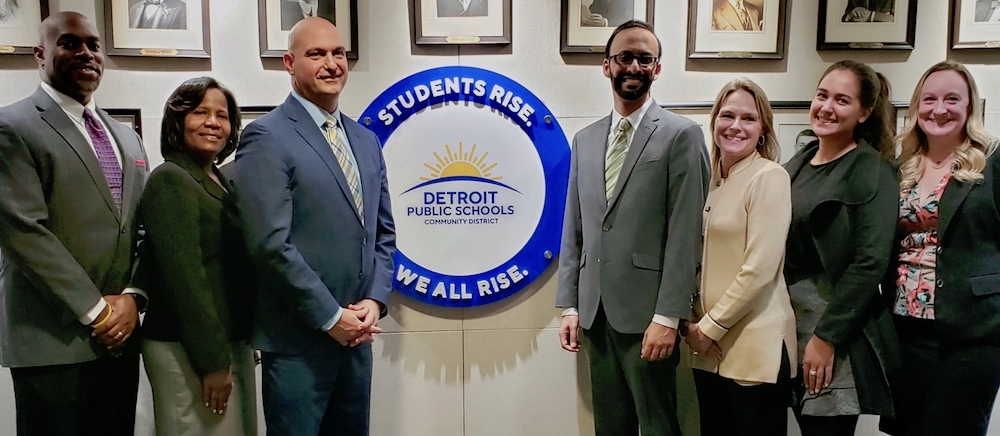
Rishi Moudgil leads the GreenLight Fund of Detroit, a locally driven, cross-sector, community-centered model to collectively identify critical paths to prosperity and invest in equitable social impact programs for children and families facing economic barriers in Detroit. SBN Detroit spoke to Moudgil about the model, sustainability, and impact on Detroit residents, businesses, and stakeholders. Q: Tell us about GreenLight Fund – what is the impetus behind it? A: We are focused on tackling poverty and its effects on residents by investing in solutions that complement the local landscape and boost the existing ecosystem with a proven model that has had a track record in other urban areas. We believe that for a social impact model to succeed and scale it must be aligned directly with who it serves and therefore local folks must drive the process of both determining their needs and selecting the ventures we invest in. It comes back to the challenge of pushing into a community versus being pulled. Our unique model is pull-through. We organize the stakeholders and local advocates to ensure that only programs that align with their needs and have high quality are brought in. Q: What are examples of programs you’ve invested in and the outcomes? A: A workforce program example is the Center for Employment Opportunities. We launched this in Detroit, and it offers immediate and comprehensive employment options for those who have been incarcerated. It’s a multistage model that helps folks to gain immediate employment and put them on a path for long-term work. This dramatically reduces the human cost and financial costs of returning to the justice system. They also partner with existing organizations to shift policy measures that benefit thousands of residents to stabilize their lives and gain employment. Another workforce program is the New Teacher Center, which provides new instructors with embedded support to enhance teaching practice and retention. This builds sustainability within their jobs and student learning gains in the classroom. The program has trained over 150 veteran teachers who mentor new teachers with evidence-based support and it’s reducing the turnover rate in the Detroit Public Schools community district. These programs each came by a community-led process where local residents helped determine the gaps in their communities. We also then hire Detroiters to run the new programs. Q: Relating it to sustainability and businesses in Southeast Michigan – what role does economic sustainability play in your investment strategy in Detroit? A: The key foundation for people to prosper is a combination of economic stability and to have opportunities to advance. Workforce opportunities are critical, and in a place that has been plagued by disinvestment for so long, workforce and economic programs are not enough. We need to wrap around human services transit, housing, education, and more. There are so many topics related to creating an economic foundation for individuals and businesses. Q: What role does environmental sustainability play? A: We can’t have stable places to live, work and play unless the environment is stable. And low-income neighborhoods are some of the most environmentally unsound areas, so this exacerbates a host of problems that continues the cycle of poverty. But where development occurs, home ownership will follow, and thus begins the process of building a more sustainable community. Q: Your website says, ‘Our deep connection with the community and strategic partnerships help organizations ramp up and start producing direct, meaningful change. This ongoing support enables organizations to thrive over time.’ How does this work? A: What we are doing is shifting an approach of social investing to both trusting residents directly and developing stronger outcomes. We rely on residents to choose their destinies. We raise unrestricted capital from partners around the city and hand the funding decisions back to local stakeholders. Deep and ongoing trust is the key ingredient toward achieving the best outcomes. After we launch, we hold a seat on their board, shepherd additional partners and resources, and help create a path of success. Q: How do you account for ROI in your investments? A: We are completely focused on social ROI, as are all of our social investment recipients. We co-develop social impact metrics with both our communities and organizations before we begin operations so there is a clear set of performance outcomes we all agree on. Each organization has a set of outcomes that we all pull together toward achieving, and we know that if these goals are achieved then we are achieving the goals desired by our stakeholders. Q: What’s the largest hurdle you face? A: The biggest challenge is the people and families that have been in some of our neighborhoods the longest have received a disproportionate brunt of the disinvestment. There is no silver bullet. Multiple efforts need to be tackled over the long term. We have to be honest about how we all got here and have difficult conversations about race and gender and inequality. So, one of the largest hurdles is alignment. Are the solutions properly aligned to the true needs of the people and planet and are they sustainable to create lasting change over time. Q: How do you see the city’s Sustainability Action Agenda aligning with the work you are doing? A: We are completely aligned with the agenda and believe we need integrated action. This means centering people and the planet simultaneously. We can no longer isolate variables and expect progress. Sustainability and social impact goals must be front and center as we build toward the future. Be sure to subscribe to our newsletter for regular updates on sustainable business practices in and around Detroit.
University of Michigan President Santa Ono Expands on Sustainability Agenda at SBND event
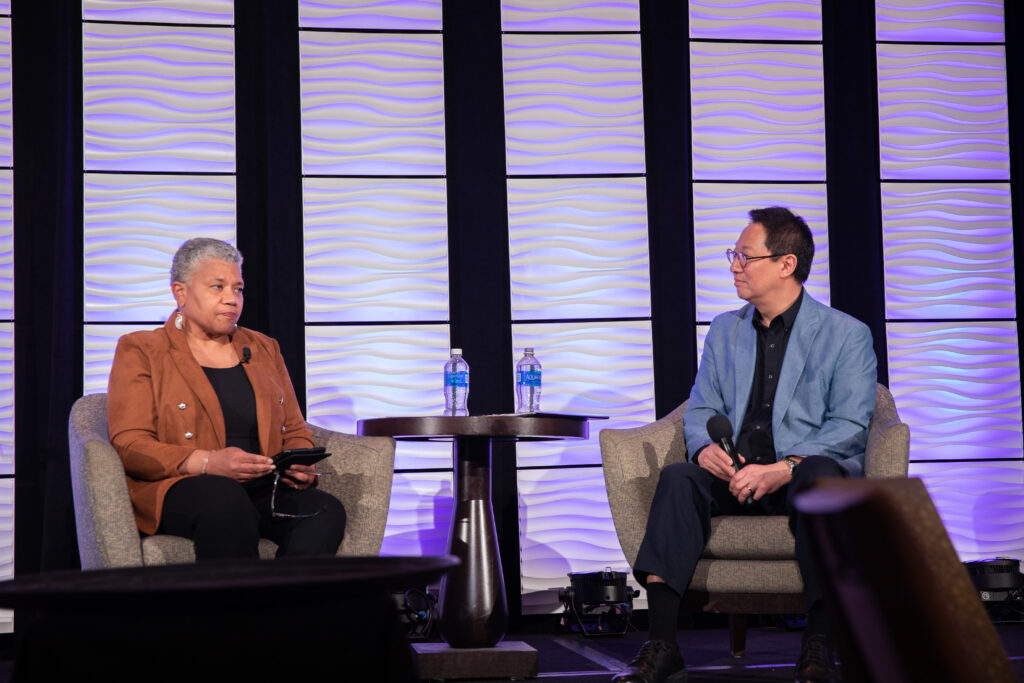
University of Michigan President Santa Ono has put sustainability and fighting climate change among his top priorities since he assumed the position in October. In addition to several programs and initiatives that are being expanded or developed, the university is now serving as the lead institution for the University Climate Change Coalition which convenes 23 leading North American universities to work toward climate action on campuses, in communities, and at a global scale. Ono spoke about his sustainability agenda for UofM at an April 5 luncheon attended by more than 250 stakeholders and business and organization leaders. The event was sponsored by the Erb Institute and hosted by the Sustainable Business Network Detroit and Inforum. Tom Lyon, faculty director at the Erb Institute, kicked off the event by saying, “As we build toward expertise on sustainability the challenge is to think globally and act locally together, and the state, the universities, businesses, and all sectors have to be involved.” John M. Erb, Erb Family Foundation chair, echoed that sentiment commenting, “We are all important stakeholders in balancing the needs of the people, planet, and economy and working toward a more sustainable future.” Working together and the need to connect the dots toward saving the planet were primary themes. Each of us is indispensable in responding to and resolving the biggest challenge our society has ever faced and solving this emergency transcends borders, Ono said. We need to come together in the form of a nexus to benefit us and all who follow us on this planet. Ono said the university benefits from strength in numbers with 800+ sustainability faculty members, 100+ student organizations, and 8,000 Planet Blue Ambassadors. He gave a special nod to students, saying, “Their passion has wowed me, and I have found that many times it’s the students who (first) identify and develop solutions.” Some of UofM’s sustainability priorities include moving to 100% renewable purchased power by 2025, building on-campus solar installations with a capacity of 25 megawatts across the Dearborn, Flint, and Ann Arbor campuses – including Michigan Medicine and athletics – and achieving LEED Platinum status for all buildings. Ono talked about the university’s historic ties with the city of Detroit and its responsibility toward it. “The university was established in 1817 at Cadillac Square in Detroit, and Mayor Duggan took me there saying that we have a great responsibility to the city, and he’s right.” On March 6, the university announced new commitments for the $250 million University of Michigan Center for Innovation, previously known as the Detroit Center for Innovation. The project is a collaboration with Stephen Ross, chairman and majority owner of Related Companies, and the Ilitch family. Ono noted that the center will accommodate academic and community programs to include three distinct types of activity—graduate education, talent-based community development, and community engagement—all in the service of economic development and job growth for Detroit. In the spirit of collaboration, Ono also pointed out that there were people attending the event from other Michigan universities and applauded this, saying, “We have our competition on the fields and courts, but getting closer to other Michigan educational institutions is very important to UofM. We need MSU to make advances in agritech, and Wayne State University is a critical component to making advances in the city. We all need to work together and we are starting to do more of that now.” Following his speech, Telva McGruder, Chief Diversity, Equity, and Inclusion Officer for General Motors Co. and member of the advisory board for the UofM School for Environment and Sustainability, moderated a Q&A. Below are some of the key questions and takeaways. McGruder: What is your top priority as president of the University of Michigan? Ono: Addressing climate change. I’ve been very vocal that this is my number one priority. Michigan has to be a leader here. And that is the wish of the collective voices of the university as well. Students are actually pushing me, and I appreciate that so much. I have told them to hold my feet to the fire. McGruder: Regarding the notion of connecting the dots, how do you as a university leader – and how do leaders in other organizations – bring expertise together for progress? Ono: I think the different pieces of the puzzle that exist illustrate opportunity. One part of the secret sauce at UofM is that each director has the autonomy to dream and be bold. Now, we need to collaborate and form connections around these ideas. The faculty and leadership and students have wowed me with their collaborative spirit. McGruder: How can companies and organizations around the state connect with the efforts of the university? Ono: We are working on making a “front door” more clear. We are going to invest and Identify someone to knit it together and act as the gatekeeper to reduce the barrier to communication inside and outside the university. McGruder: Progress sometimes means people changing ways of doing things and letting go so that we can move forward. What are your thoughts as we move forward toward carbon neutrality on some of the things we have to encourage communities to let go of? Ono: It goes both ways. Trust is a critical point. Leaders have to earn trust. We as a university have to go into communities knowing that we have as much to learn from them as they do from us. We as a university have made mistakes along the way, and so have other institutions and companies. Addressing that truthfully is a prerequisite to going into communities and working together. McGruder: When it comes to funding, how do we help decision-makers and leaders within all sectors understand the need to spend on sustainability efforts? Ono: Addressing the climate crisis is not a bottom-line budget issue it’s a social responsibility. And what is the point of a strong financial standpoint if there’s no planet to exist on? A recording of the complete program can be found here: https://vimeo.com/815068547 Be sure
Eastern Michigan University – Steam Heat, Solar Panels, and a Recent Bronze STARS Rating
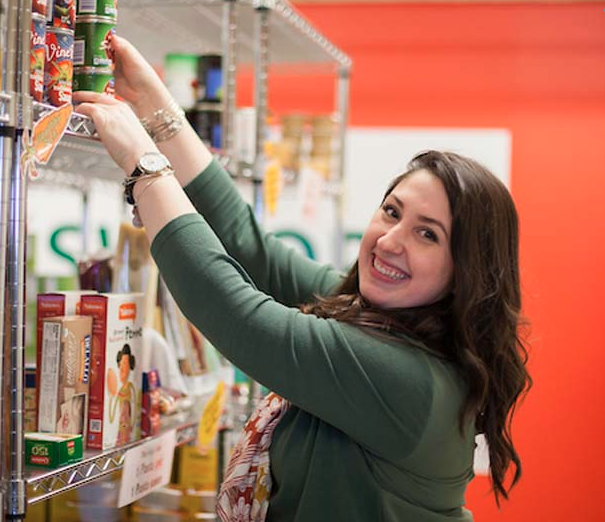
Eastern Michigan University approaches sustainability through a systemized framework and a community-derived mindset that together drive several sustainability initiatives and sustainable infrastructure endeavors on campus. For its sustainability framework, EMU uses the Association for the Advancement of Sustainability in Higher Education (AASHE) and its Sustainability Tracking, Assessment and Rating System (STARS) system and has developed a President’s Sustainability Commission, comprising a broad array of offices and people across the university to develop and execute sustainable practices. SBN Detroit spoke to Tom Kovacs, chair of the president’s sustainability commission and professor of meteorology and climate in the Department of Geography & Geology, about EMU’s sustainability efforts. Q: What are some of the recent sustainability initiatives you’ve put into place? A: First, we are very proud to have completed our STARS certification process and received Bronze Certification. We know that there is room for improvement, which is what we are working on this year. One of the areas we scored lower on is engagement, so to that end, we are building sustainability information into our orientation for 2023 and also are doing a lot more to let people know the sustainability commission exists and inviting people in to help with our efforts. We also very recently partnered with a sustainable mobility solution – Spin Scooters – as the exclusive scooter provider on campus which is helping a lot with student and staff transportation. Another development is a new partnership with EnergySage. EnergySage provides a marketplace that connects interested parties to vetted installers. You simply list your needs, and the various installers provide you with a quote and basically compete for your business, so you ultimately get the best deal. There is also an educational component of EnergySage that offers advisors to help work through the options, as well as a full library of resources on clean energy, and how to live more sustainably. This collaboration helps us improve our STARS ranking and benefits the EMU community so it’s a win-win. Q: How is the university’s heat powered? A: We have a 55-ton cogeneration system that is powered by natural gas and produces electricity and steam. The system supplies approximately 98 percent of the heat and 93 percent of the electricity to the 800-acre campus. The unit will create an annual reduction of 21,305 tons of carbon dioxide (CO2), equivalent to 78.2 million miles driven by an average passenger vehicle – or the preservation of 260 acres of forests. Q: What are some other examples of campus infrastructure focused on sustainability? A: We have solar panels installed at bus stops lining the perimeter of campus and one in the middle of campus. The energy from the sun is stored in the battery assemblies to be utilized during the evening hours to keep travelers safe. We also have a student-led Giving Garden that provides an opportunity for staff, faculty, students, and Ypsilanti residents to grow fresh produce. It’s also used to educate local preschoolers and other students in the area. There is a new composting effort underway, and the garden provides locally grown food to the Swoops Pantry. Q: What is the Swoops Pantry? A: The Swoops Pantry was initiated by a former EMU student and is run by a leadership board of faculty, staff, students, and alumni volunteers. It operates as a sustainable resource for food-insecure students. There is a large stigma involved so they work hard to make things discreet and anonymous. Similar to Swoops, we also recently initiated an EMU Career Closet that provides apparel for students going on interviews. This is a great resource for those who don’t have the means to shop and purchase extra clothing. Q: The dining services in EMU dorms are managed by Compass Group’s Chartwells Higher Education Dining Services. What does this mean in terms of sustainable food practices? A: We shifted to privatized dining about six years ago and work with Compass Group to make dining a more sustainable endeavor. They’ve partnered with local community gardens; they work to incorporate composting; they work to limit waste; and they host a number of events such as Meatless Mondays and Farm to Fork luncheons. They also host a teaching kitchen. We have people from their team who volunteer on our Sustainability Commission, and they will be speaking at our student orientations on sustainability. Q: You also have an office supply program – Partnering for Sustainability. A: Yes, in 2019 we partnered with Office Depot. This allows the EMU community to purchase greener office products and select greener options when available. Recycled bags and reusable plastic totes are also used for delivery versus boxes. Q: What are your areas of focus for the near future? A: We’ll continue all of our efforts in the initiatives we’ve discussed here and seek to enhance them where appropriate. And again, coming off of the recent STARS certification process, our big focus is engaging the community in all of these efforts and more to work toward a greener campus and surrounding area. Be sure to subscribe to our newsletter for regular updates on sustainable business practices in and around Detroit.
Energy Savings Plus Workforce Development Aids Companies, Students
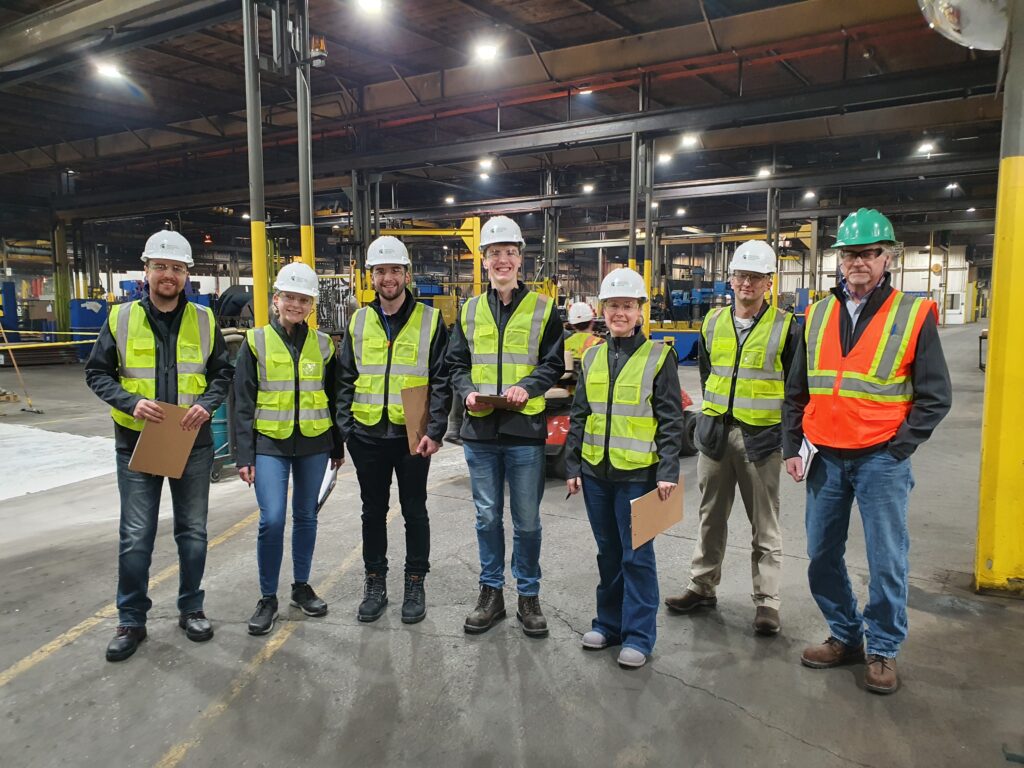
The Industrial Assessment Center (IAC) at Michigan State University, in collaboration with Michigan Technological University and Henry Ford College, offers the 6,200+ small and medium manufacturers (SMEs) in Michigan free technical assessments to help save energy, improve productivity, reduce waste, and reduce carbon emissions. As a result, the institutions are helping to build and expand a knowledgeable and diverse energy workforce pipeline. The scope of topics covered includes: – Energy and water savings – Smart manufacturing – Energy management – Cybersecurity – Resilience planning – Decarbonization – Electrification SBN Detroit spoke to Dr. Kristen Cetin, associate professor at MSU in the Department of Civil and Environmental Engineering. She also is the director of the MSU Industrial Assessment Center. Q: Tell me about the Industrial Assessment Center A: We are a U.S. Department of Energy-funded center focused on two things: First, we support small and medium-sized manufacturers and commercial building owners by providing one-day no-cost assessments to identify opportunities to improve and support their energy and sustainability goals. Our second focus is workforce development. Once students graduate they take manufacturing and sustainability and energy knowledge into the workforce. Some students will go on to jobs in manufacturing or energy, and others perhaps not, but will know to integrate what they’ve learned in whatever career they pursue. We are one of 37 IAC centers across the country, and ours is a collaboration between Michigan State University, Michigan Tech, and Henry Ford College. Q: How did the IAC come to be? A: The Department of Energy program has been in existence since the ‘70s to support energy efficiency, and every five years they do a funding call. That’s where it began. Michigan has not had an IAC for about six years. I moved here from Iowa and was surprised that this manufacturing-rich area did not have an IAC providing this service. So, when the funding call came out we applied for Topic 1, which is the manufacturing side, and Topic 2, which is the commercial building side, pilot program. We knew MSU alone couldn’t easily support all regions of Michigan given how big Michigan is. Michigan Tech is surrounded by important and different industries, so they were a natural collaboration to support the northern part of the state. Collaborating with Henry Ford College as a community college helps us to support the Detroit area, as well as to better reach more commercial buildings. This collaboration also enables broader diversity of students to participate in terms of training. So we partnered, and it’s been going very well to date. Q: What does the assessment process involve and how much support do you offer outside of the assessment? A: The assessment process begins with a thorough analysis of utility bills, followed by a one-day in-person assessment. Sometimes we leave datalogger equipment to continue to monitor the operation of energy-consuming systems after the assessment. Once the assessment and analysis are complete a full report is written up including detailed recommendations, estimates of energy efficiencies, and associated costs. We then follow up about a year after the assessment to see what was implemented, if there were efficiencies gained, and receive feedback on what was actionable and what was not. This helps us figure out what we can do better and what kind of impact each assessment has made. In terms of supporting the implementation of our recommendations, we do a few things. If appropriate we contact utility companies to see if there are rebates or incentives that fit well. We also connect interested companies to the Better Plants program, which can help facilitate larger-scope initiatives and provide ongoing support beyond our assessments. And finally, a new development that is just becoming available is a matching grant program to support any company that completes the assessment. Part of the Bipartisan Infrastructure Law implementation, this is a new grant that will match company funds to support implementation of the changes recommended in the post-assessment report. Q: Are all assessments the same or do they vary depending on the building? A: We typically have one day to do them, so to that end we follow a similar schedule and format. But our recommendations and areas of focus vary depending on what kind of manufacturing the company is doing, or what kind of commercial building it is. We do a walk-through in the morning and obtain information about all of their systems in place. At lunch, we brainstorm about areas of improvement, and then we split into groups to dive deeper into those areas throughout the afternoon. Q: How many assessments are done annually? A: We do 30 assessments per year, approximately 20 of which are manufacturers and ten commercial buildings. Q: What is the role of the students? A: This is very much a student-led program. Students are the main point of contact with each of the companies we work with, the lead in the discussions, the lead in data collection, and all aspects of the program. There is a student lead for each assessment, and that person is in charge of setting up the logistics and takes the lead during the assessment. They also present the report and recommendations to the companies we work with. They also lead the student group in creating the report draft review, which is then reviewed and approved before sharing with the company. The faculty and staff in the IAC help to support and generate ideas, provide technical expertise, as well as review recommendations and overall reports. Our student groups range from approximately three to eight per assessment. Approximately 90% of the students are undergraduates from a variety of engineering and non-engineering backgrounds. There is also a three-credit training course that students in the IAC take during their first semester in the program. All students are paid for the work they do, including training. Q: What does it mean to have this practical hands-on experience? A: I think this hands-on training is even more valuable than taking classes. It’s invaluable – this
Working at the intersection of Business, Education, and Research for a More Sustainable World
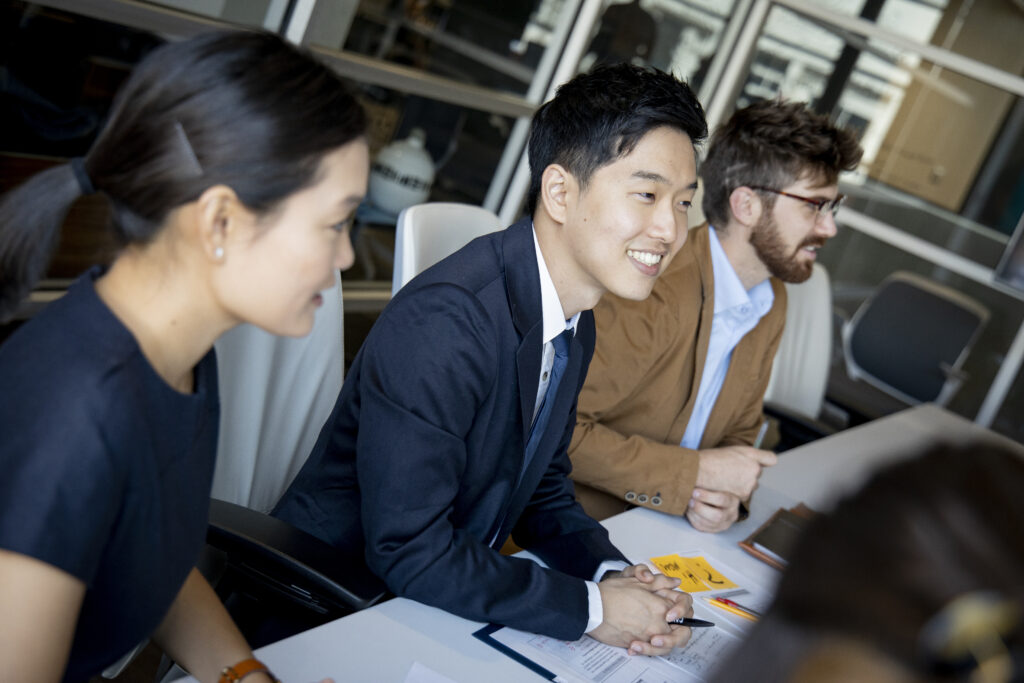
The Erb Institute at the University of Michigan has a mission to create a sustainable world through the power of business. The institute is a partnership between the Ross School of Business and the School for Environment and Sustainability, where students and business partners work together to fulfill this mission. What does this translate to, how does it work, and what impact does it have on Southeast Michigan Businesses? We talked to the Erb Institute Managing Director Terry Nelidov to find out more. Nelidov began his career as a US Peace Corps Volunteer in Paraguay in the early 1990s. Later he served as founding director of INCAE Business School’s Business Leadership for Sustainable Development Network in Latin America, as General Manager for AmeriCasas (a startup land-development company in El Salvador), and then country representative for Catholic Relief Services in Peru. He holds a BS in Industrial Engineering from Stanford University and an MBA from IESE Business School in Spain. Q: The mission of the Erb Institute is to create a sustainable world through the power of business. How do you approach this? A: Yes, this has been our mission for over 25 years and remains our mission today, although our areas of focus have expanded and evolved. When Fred and Barbara Erb endowed the institute in 1996 the focus was on two areas: teaching and research. Over the years the program has evolved to encompass applied research and impact. Meaning we now work to translate research results into practical management tools, case studies, and frameworks for business leaders to put into practice. So today, we have expanded how we think about the work we do into three main pillars; research, teaching, and business engagement. The latter challenges us to be involved in the global dialogue on sustainability and to bring back new questions to inform our research and teaching, while actively sharing the thought leadership of our faculty and students to inform that global conversation. One way we do this is by leading and taking part in global sustainability events such as the SB 2017 and 2019 conferences, the Innovation Forum UK, and more. The Erb Institute is so much more than a teaching institute – it’s about making an impact with businesses and nonprofits focused on sustainability through teaching and research and then sharing the work that comes out of that to scale up our impact in Michigan, across the United States, and beyond. Q: How are you engaging with businesses? A: Great question and my best response would be simply two examples. Recently we hosted the Michigan Business Sustainability Roundtable (MBSR) to bring together senior Michigan business leaders from Kellogg, Dow, Meijer, and others committed to working toward transformational change in social and environmental performance and asked what challenges they have in achieving their goals at the policy level, and how we could support them in advocating together for climate change and racial justice in Michigan. This was a six-month process. We are looking to deepen our connections with policymakers and advocates at the state level and use our collective voices to raise the bar on business, sustainability, and justice in Michigan. The second example involves a groundbreaking research project with Ford Motor Co. In 2018 Ford came to us with a simple but intriguing question, “How can we measure the impact of smart mobility on the human condition?” We launched a two-year research project, co-hired a postdoctoral research fellow, and created the Ford Model of Human Progress. What was particularly exciting about this initiative was that a year later, HP Enterprise attended a Sustainable Brands event where they heard about the model and then took it back to Silicon Valley and began adapting Ford’s model to HP Enterprise’s work in the tech industry. Q: What sustainability issues do you focus on beyond the environment? A: While climate change, water, biodiversity, circular economy, and plastics remain at the forefront, the scope of sustainability has expanded to include a range of social issues, even the very concept of justice and the role of business in a just society. Businesses are being called on to play a significant role here…to support social issues, such as access to education, access to health, and employee engagement and well-being. So, we’ve expanded with this evolution. Indeed, social justice is a significant focus area within our new five-year strategic plan, which focuses on preparing “architects of change” who can work at the intersection of business, sustainability, and justice. Q: How do you think the graduates of the Erb Institute impact businesses? A: We have alumni working in leadership positions in 17 countries. I can point to three examples of how they are making a significant impact. The first is Monique Oxender. While still studying at the Erb Institute, Monique took an internship at Ford and then a full-time position, helping to create their human rights function in the early 2000s. She is now chief sustainability officer at Keurig Dr Pepper, a global platform for sustainability impact. All of that began with her Erb experience. A great example of nonprofit leadership is Laura Rubin, our first Erb graduate. She worked on the Huron River Watershed Council for 25 years and is now a recognized leader in the Midwest and Great Lakes Region in water crisis and habitat issues. A third example is Rep. Joe Tate, who went into public service and politics and was recently elected as the first Black speaker of the Michigan House of Representatives. Interestingly, he was also a USMC Veteran and a former NFL offensive lineman! Q: How do you think the work you are doing at the Erb Institute impacts businesses in general? A: First, the students in class today will be in leadership roles in 10 to 15 years. Second, we make an impact through the power of our ideas and the research of our faculty. The innovations that come out of working with students, researchers, and professors are the ideas that are shaping sustainability going forward. Q: What does the
Michigan Green Communities is Moving Community Sustainability Initiatives Forward
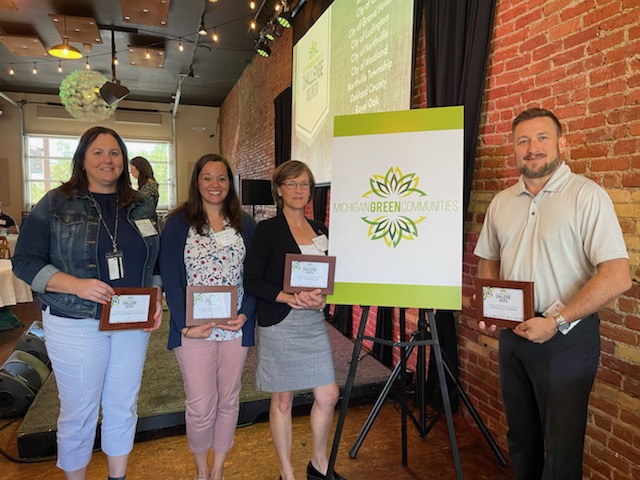
Established in 2009, Michigan Green Communities (MGC) is a statewide sustainability assistance program that works to embed sustainability into municipal and county operations. MGC is a collaboration and partnership of the Michigan Economic Development Corporation (MEDC); the Michigan Department of Environment, Great Lakes, and Energy (EGLE); the Michigan Department of Health and Human Services (MDHHS); Michigan Department of Transportation (MDOT); the Michigan Department of Natural Resources (MDNR); the Michigan Association of Counties (MAC); the Michigan Municipal League (MML); and the Michigan Townships Association (MTA). It is led by a 15-member steering committee from the partners and local governments, including West Bloomfield Township, Ann Arbor, and Canton Township. SBN Detroit spoke to Danielle Beard, Michigan Green Communities coordinator, to find out more about the work it is doing to impact sustainability initiatives in Southeast Michigan and throughout the state. Q: What is Michigan Green Communities? A: Michigan Green Communities (MGC) is a sustainability benchmarking, networking, and technical assistance program for municipalities and counties in Michigan. The goal is to embed sustainability in local government operations and promote innovative solutions at the local, regional, and state level. The main component of the program is the annual MGC Challenge (that’s the benchmarking piece) where communities track in their online accounts whether they’ve completed or are in progress on a set of action items and log metrics (click here for the full list of action items and metrics). Communities that participate in the MGC Challenge have access to free support and technical assistance programs through the MGC program and EGLE’s Catalyst Communities program. Q: What is the impetus behind MGC? A: There are a lot of benefits to embedding sustainability into municipal and county operations. Cost savings is a big driver for communities as they can slash their energy and water bills, helping them control the cost of their operations. Additionally, Michigan’s weather patterns are changing drastically, and local units of government play a large role in adapting our society to these changes. Local policies and decisions can help to mitigate the effects of heat waves, severe snowstorms, massive rain events, and more. Multiple state agencies interact with communities on different areas of sustainability. The MGC program was designed to bring those agencies together to collaborate on how to best meet the needs of local governments. And because local governments are also on the steering committee, they’re providing feedback to state agencies on the challenges they face to inform the agencies’ work. Q: What areas of sustainability are you focused on? A: The Michigan Green Communities program focuses on embedding sustainability into local government policies, programs, and operations. The MGC Challenge action item categories outline this best: Planning for Inclusive and Lasting Impacts Climate Resilience and Adaptation Energy Efficiency & Renewable Energy Responsibly Managing Materials Sustainable Land Use & Economic Development Improving Health Outcomes Protecting & Conserving Water Resources Support Clean & Inclusive Mobility Inspire & Mobilize Residents Q: What examples can you give of the work that’s been done? A: Since it was started in 2009, over 100 communities have participated in various ways and taken steps to advance sustainability in their communities. In our 2021 challenge: 45 communities participated representing 3.6 million Michiganders. MGC awarded 12 bronze certifications, 10 silver certifications, and 23 gold certifications. Over 1,500 sustainability actions were logged as complete, and over 1,000 were logged as in progress. The MGC Challenge added a set of metrics to track data like GHG (greenhouse gas) emissions, community water use, and more. We launched the MGC Accelerator Cohort to advance sustainability practices in bronze & silver MGC Challenge communities. The current challenge is now live, and communities can report on their sustainability actions through the 2023 calendar year. Q: What does the future look like for MGC? A: In short, the future of MGC will involve bringing more technical assistance, resources, and templates to communities to help them expedite resiliency strategies and decarbonize their operations. This will also involve more networking among communities so they can learn from one another and not reinvent the wheel. We launched the MGC Accelerator Cohort in January 2023, which is a group of bronze and silver-certified MGC Challenge communities that come together as a group to address sustainability issues. The first topic that we’re focusing on is green infrastructure. Many communities in Michigan have been dealing with flooding and water runoff causing pollution, fluctuating shoreline water levels, and severe weather events. Green infrastructure solutions can help to address these issues in a way that protects man-made infrastructure and natural features. The group will meet monthly with subject matter experts and consultants that MGC has hired to share ideas, draft ordinance language, and identify potential implementation opportunities and funding for green infrastructure projects. After the green infrastructure module, the cohort will select another topic to work on in a similar style. The cohort is open to any community that has taken the previous Michigan Green Communities Challenge or plans to participate in the current Michigan Green Communities Challenge. This work is being funded by the MEDC. Be sure to subscribe to our newsletter for regular updates on sustainable business practices in and around Detroit.
